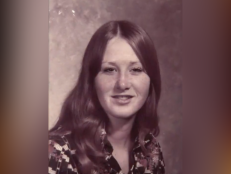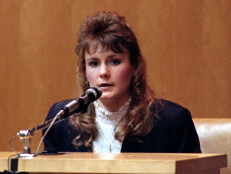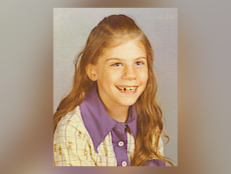Inside The Apocalyptic Cult That Performed Exorcisms & Saw A 'Demon On Every Doorknob'
Leader Sam Fife reportedly preached that only “sinless perfection” could save followers — and the church would go to any extreme to enforce it.
![The Move [Cara Cobb/Lucky 8]](http://investigationdiscovery.sndimg.com/content/dam/images/investigationdiscovery/crimefeed/legacy/2019/07/Cara-Cobb-Lucky-8-The-Move-S7082019.jpeg.rend.hgtvcom.616.411.suffix/1562168956922.jpeg)
The Move [Cara Cobb/Lucky 8]
According to the new ID documentary special, People Magazine Investigates: Cults, The Movement of God, a former country-western singer and ex–Baptist preacher named Sam Fife said he had a vision in the late 1960s that changed his life forever — and, eventually, the lives of tens of thousands of true believers.
On the special, People Executive Editor Cynthia Sanza clarifies, “Sam Fife was 37 when he said he received a divine revelation from God. He believed he was now a prophet of God. He said there was a coming apocalypse, and the only people who would survive were those who had achieved a state of sinless perfection.”
Fife then reportedly established a charismatic Christian church that came to be known as The Move.
In contrast to the popular “Jesus people” movement of the time in which new sects tended to highlight love and acceptance, The Move reportedly preached that the mortal world was filled with evil, humanity was sinful by nature, literal demons from hell lurk everywhere at all times, and that the apocalypse would soon be at hand.
Survivors of The Move have said the church made it clear that only by flawlessly adhering to Sam Fife’s rules, regulations, and revelations could anyone achieve “sinless perfection” and, thereby, get saved from an eternity in Hell.
Chief among the Move’s commands was breaking all ties to one’s previous existence and absolutely shutting down any connections to life or people outside the cult. The rules, however, also reportedly included dress codes, hair-length requirements, and arch directions on how to discipline children. Apparently, such regimentation appealed to numerous seekers worldwide.
By 1970, The Move grew from hundreds of members to thousands, the result of a traveling ministry that stretched from the Deep South up to New England and across the country to the uppermost West Coast.
In the fall of 1971, Fife allegedly proclaimed that all members of The Move needed to immediately relocate to remote areas of Alaska, Canada, and South America. Once there, the disciples were reportedly required to build self-sustaining communal farms in order to prepare for the imminent apocalypse.
Both before and after this sudden migration order, Fife maintained that demons plagued humanity and possessed individuals constantly. Members of The Move, he said, were not immune. The sole solution proposed by Fife was to administer exorcisms to those he determined to be afflicted.
As Cara Cobb, a survivor of the Move, recalled, “Sam Fife believed that every mode of ill behavior, or even mental [disabilities] … were somehow caused by a demonic influence. We went through a time when we saw a demon on every doorknob.”
One such case of so-called “possession” was reportedly that of Jane Miller. Sanza explained, “Jane Miller was a mother of six who had a history of mental illness. She’d been in psychiatric hospitals, but nothing had been able to help her. And when Sam Fife heard her story, he decided that what she needed was an exorcism.”
Fife reportedly made an audio recording of the exorcism and shared it with his followers. According to ex-members, the resulting cassette tape became a sensation in The Move, getting circulated worldwide and played nonstop in believers’ homes. Multiple former Move members have alleged that such rituals involved being held down and beaten for long periods, often with paddles.
All the while, Fife and the church elders allegedly even blamed abuse victims for participating in their own mistreatment due to demons.
The People Magazine Investigates special features an interview with Richard Kiers, a survivor of Fife’s teachings who fled The Move when he was a teenager.
Kiers relates that when he was 11, he witnessed two boys in the church sexually abusing a nine-year-old girl. After telling his parents what he saw, Kiers said the elders called a meeting with the accused boys and the victim, along with their parents.
At that point, Kiers said, “She was treated like it was her fault, like she was guilty. She was severely beaten and strapped, because she was considered as a participant, rather than a victim. I believe that that was the very first moment in my entire life that I questioned God.”
Regardless of the alleged horrors going on within the church, The Move reportedly grew considerably in membership and power throughout the early 1970s.
Occasionally, it was reported, parents contacted law enforcement to complain that their young people had disappeared into a cult, but The Move generated little mainstream controversy until the middle of the decade.
As Elaine Aradillas, a staff writer at People magazine said, “The cult had remained largely under the radar until the case of Charlene Hill, which attracted national attention.”
According to the show, Charlene Hill was a mother of three who was said to have been contending with mental-illness issues.
In 1975, Hill was reportedly dispatched to a Move-run “deliverance farm” in the rural community of Sapa, Mississippi. The farm was one of an alleged network of compounds used by the cult as a lock-down “correctional” facility. Husband-and-wife Fife disciples John and Bambi Henson reportedly oversaw the Sapa unit.
Priscilla Roberts is a Move survivor who said that she had been held at the farm for some time when Hill arrived. Roberts also recalls on camera about having to endure her own paddling exorcism when she was 13 — allegedly while her parents watched.
From the time she got to the farm, Roberts said she saw inmates paddled, beaten, tied to beds, and forced to take ice baths.
After allegedly being abused on the farm for about 15 months, Roberts said she decided to cope by becoming one of the Hensons’ “pets” — young people the couple reportedly kept close to them for assisting with “unruly” inmates.
In addition, Roberts said she was entirely “brainwashed” at the time, living in abject terror of being possessed by demons and knowing she’d be violently punished again by staffers if she dared to defy orders.
Recalling Hill’s presence at the farm, Roberts says, “The routine was to tie Charlene in bed every night, and Charlene made it clear from the beginning she didn’t want to be there. She wanted to contact her parents, and they would not allow her to do that. So she went on a hunger strike.”
Roberts goes on to reveal on the special what she describes as Bambi’s torturous strategy to force-feed Hill and adds, “It was horrible. It felt horrible…. I just felt sick.”
Eventually, Charlene reportedly managed to get word of her plight to her parents, and they were able to rescue her. Police then arrested John Henson and, in 1977, he went to trial for kidnapping.
Describing the shock of the situation, former Assistant District Attorney Stephen Wright said, “In 1977, the idea that this sort of thing was going on in a rural farm area in backwoods Mississippi was astonishing. The Henson defense went to great lengths to portray Ms. Hill as having some mental problems, but also that she was not credible.”
Other former members who escaped The Move took the stand at Henson’s trial and corroborated Hill’s story. The result was that the jury convicted Henson of kidnapping and he was sentenced to 10 years.
The sentence didn’t stick, however. The state supreme court reportedly later overturned Henson’s conviction for lack of evidence. After getting released from jail, Henson allegedly returned to his elder position in The Move.
The Move itself, however, took a shocking dive on April 26, 1979. While flying over Guatemala, Sam Fife and three of his followers died in a plane crash. For many church members, this news reportedly challenged their belief that Fife was a flawless prophet of God and impervious to things that might kill other humans.
Survivor Richard Kiers said the cult’s official line was, “Sam had achieved such a level of perfection, he could no longer be on this earth.”
Since then, though, membership in The Move has reportedly been in consistent decline. No matter what, however, the impact Sam Fife and his cult had on many of those who passed through it will still be felt for decades to come.
Watch "The Movement of God" episode of Investigation Discovery's People Magazine Investigates: Cults on ID GO now!
Read more: No Place Like Home, Vennie Kocsis









